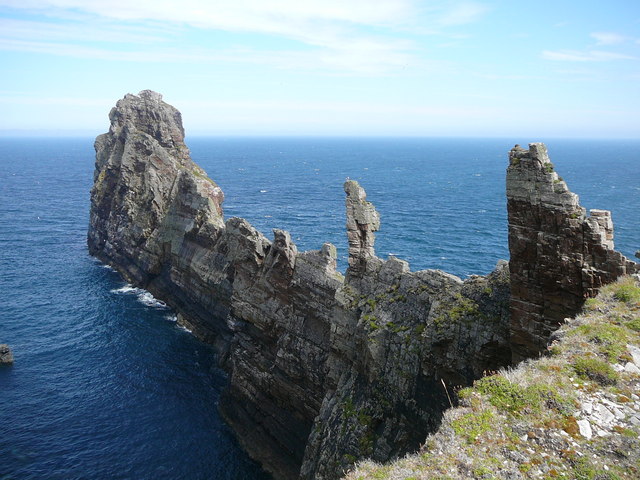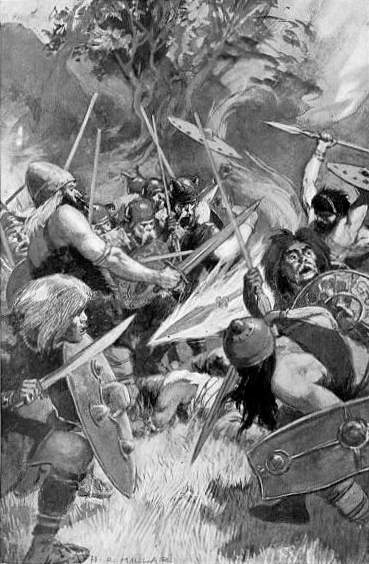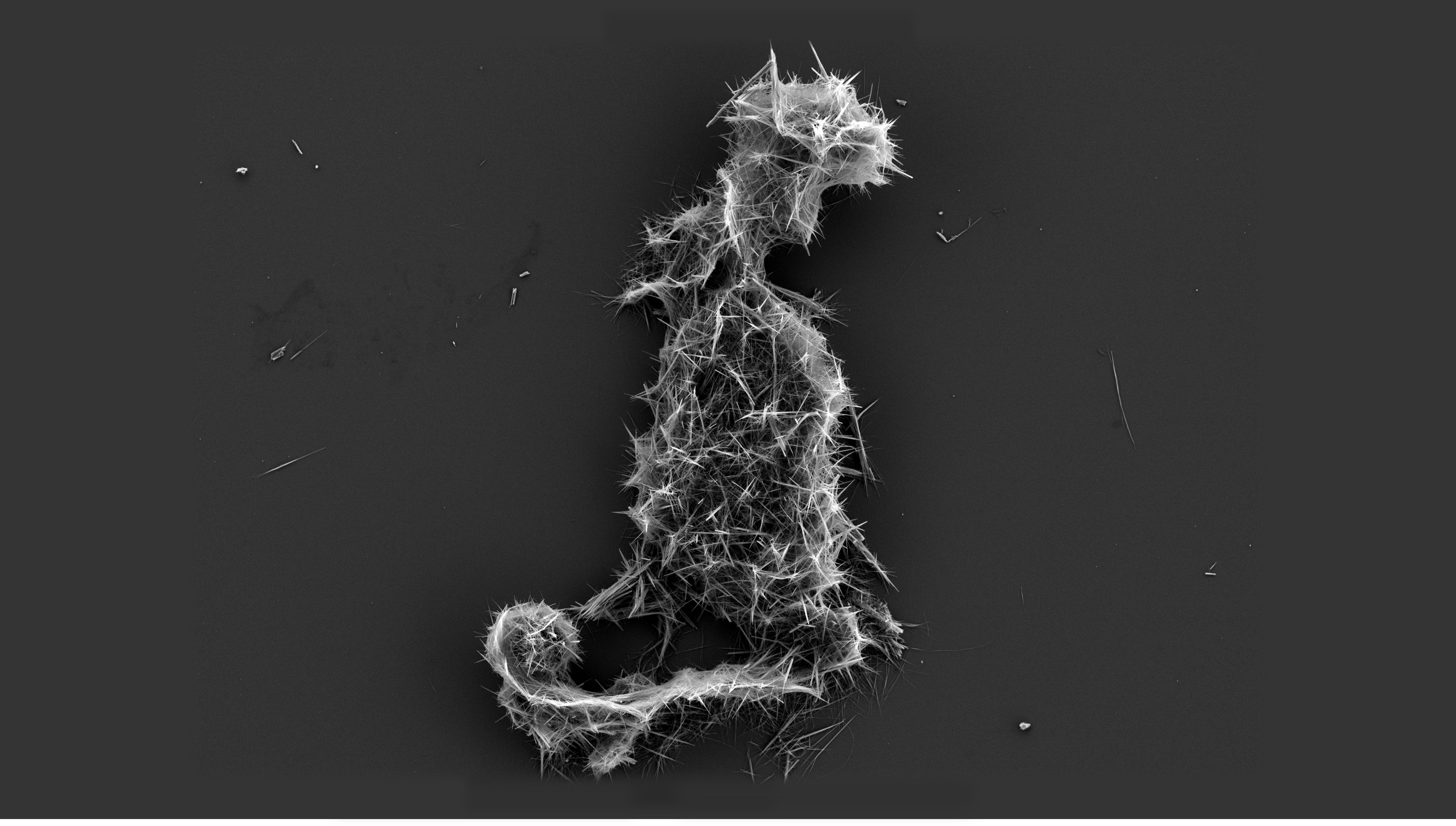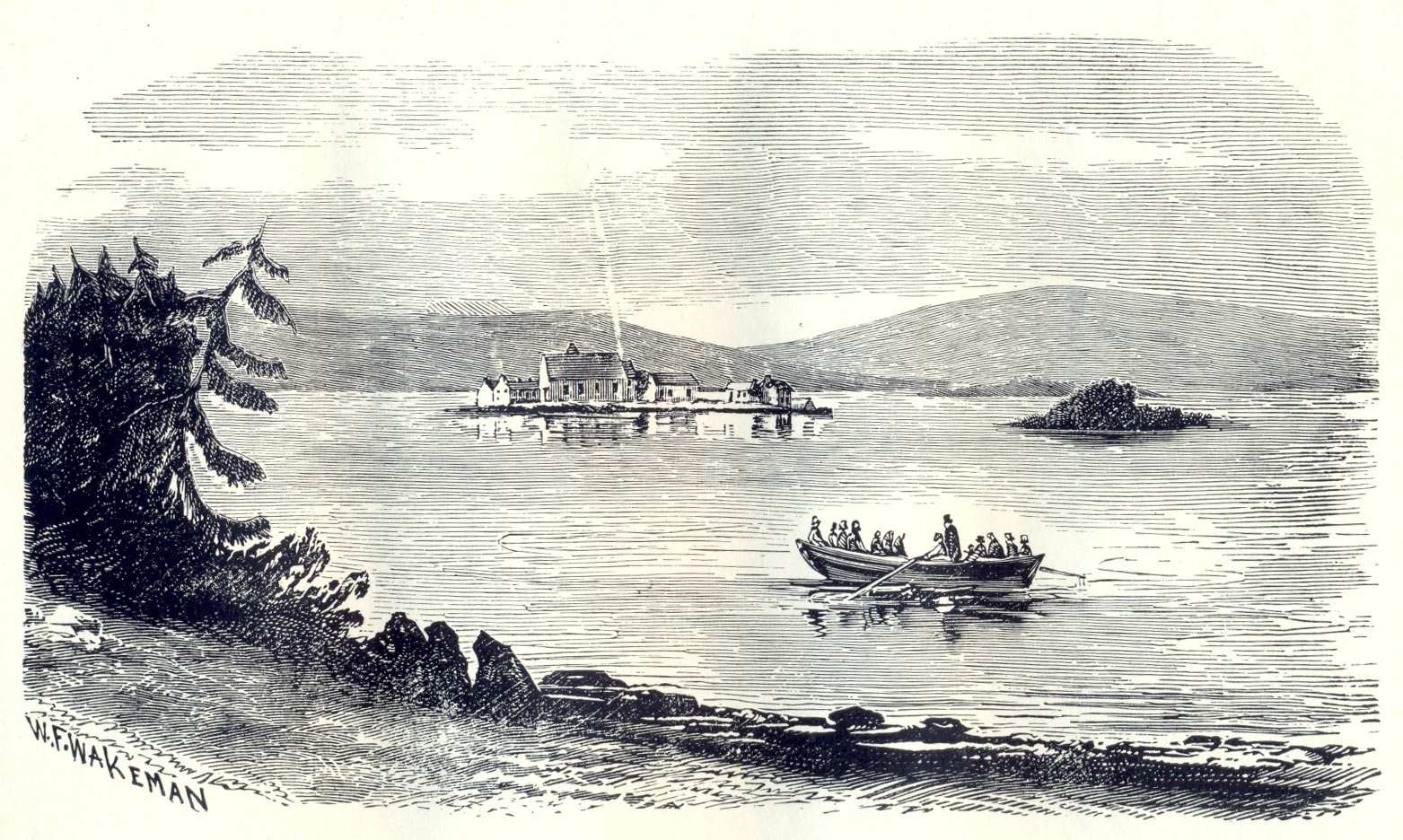|
Brain Balls
In Irish history and legend, brain balls () are small stone-like balls claimed to have been made from the heads or brains of enemies. No examples that modern analysis confirms as human have survived. Description In literature and legend In Geoffrey Keating's 17th century Foras Feasa ar Éirinn (or 'History of Ireland') in 'An Account of the Death of Connor, King of Ulster' he records the background of the tradition, and a Christianised tale relating to it. According to Keating it was the custom during the period described in the Ulster Cycle for a victorious champion to take the brains of a defeated adversary, and make a ball of them, by mixing it with lime, followed by drying in the sun - such a ball was displayed at important events. In the story told by Keating, two fools in the court of king Conchobar mac Nessa (Connor son of Ness) decided to steal such a brain ball, being from the head of Mesgegra, former king of Leinster - having stolen it the fools then began to play wit ... [...More Info...] [...Related Items...] OR: [Wikipedia] [Google] [Baidu] |
Geoffrey Keating
Geoffrey Keating ( ga, Seathrún Céitinn; c. 1569 – c. 1644) was a 17th-century historian. He was born in County Tipperary, Ireland, and is buried in Tubrid Graveyard in the parish of Ballylooby-Duhill. He became an Irish Catholic priest and a poet. Biography It was generally believed until recently that Keating had been born in Burgess, County Tipperary; indeed, a monument to Keating was raised beside the bridge at Burgess, in 1990; but Diarmuid Ó Murchadha writes, In November 1603, he was one of forty students who sailed for Bordeaux under the charge of the Rev. Diarmaid MacCarthy to begin their studies at the Irish College which had just been founded in that city by Cardinal François de Sourdis, Archbishop of Bordeaux. On his arrival in France he wrote ''Farewell to Ireland'', and upon hearing of the Flight of the Earls wrote ''Lament on the Sad State of Ireland''. After obtaining the degree of Doctor of Divinity at the University of Bordeaux he returned about 161 ... [...More Info...] [...Related Items...] OR: [Wikipedia] [Google] [Baidu] |
Ironstone
Ironstone is a sedimentary rock, either deposited directly as a ferruginous sediment or created by chemical replacement, that contains a substantial proportion of an iron ore compound from which iron (Fe) can be smelted commercially. Not to be confused with native or telluric iron, which is very rare and found in metallic form, the term ''ironstone'' is customarily restricted to hard, coarsely banded, non-banded, and non-cherty sedimentary rocks of post-Precambrian age. The Precambrian deposits, which have a different origin, are generally known as banded iron formations. The iron minerals comprising ironstones can consist either of oxides, i.e. limonite, hematite, and magnetite; carbonates, i.e. siderite; silicates, i.e. chamosite; or some combination of these minerals.U.S. Bureau of Mines Staff (1996) ''Dictionary of Mining, Mineral, & Related Terms.'' Report SP-96-1, U.S. Department of Interior, U.S. Bureau of Mines, Washington, D.C.Neuendorf, K. K. E., J. P. Mehl Jr., and J ... [...More Info...] [...Related Items...] OR: [Wikipedia] [Google] [Baidu] |
Carved Stone Balls
Carved stone balls are petrospheres dated from the late Neolithic, to possibly as late as the Iron Age, mainly found in Scotland, but also elsewhere in Britain and Ireland. They are usually round and rarely oval, and of fairly uniform size at around inches or 7 cm across, with anything between 3 and 160 protruding knobs on the surface. They range from having no ornamentation (apart from the knobs) to extensive and highly varied engraved patterns. A wide range of theories has been produced to explain their use or significance, with none gaining very wide acceptance. They are not to be confused with the much larger smooth round stone spheres of Costa Rica. Age and distribution Carved stone balls date as old as 5,200 years old, coming from the late Neolithic to at least the Bronze Age. Nearly all have been found in north-east Scotland, the majority in Aberdeenshire, the fertile land lying to the east of the Grampian Mountains. A similar distribution to tha ... [...More Info...] [...Related Items...] OR: [Wikipedia] [Google] [Baidu] |
Balor
In Irish mythology, Balor or Balar was a leader of the Fomorians, a group of malevolent supernatural beings. He is often described as a giant with a large eye that wreaks destruction when opened. Balor takes part in the Battle of Mag Tuired, and is primarily known from the tale in which he is killed by his grandson Lugh of the Tuatha Dé Danann. He has been interpreted as a personification of the scorching sun, and has also been likened to figures from other mythologies, such as the Welsh Ysbaddaden and the Greek Cyclops. Name The name ''Balor'' or The Lonni may come from Common Celtic ''*Boleros'', meaning "the flashing one". In the early literature he is also referred to as ''Balor Béimnech'' (Balor the smiter), ''Balor Balcbéimnech'' (Balor the strong smiter), ''Balor Birugderc'' (Balor of the piercing-eye), ''Balor mac Doit meic Néid'' (Balor, son of Dot son of Nét) or ''Balor ua Néit'' (Balor, grandson of Nét). Later forms are ''Balor Béimeann'' or ''Balar Be ... [...More Info...] [...Related Items...] OR: [Wikipedia] [Google] [Baidu] |
Lugh
Lugh or Lug (; ga, label= Modern Irish, Lú ) is a figure in Irish mythology. A member of the Tuatha Dé Danann, a group of supernatural beings, Lugh is portrayed as a warrior, a king, a master craftsman and a savior.Olmsted, Garrett. ''The Gods of the Celts and the Indo-Europeans''. University of Innsbruck, 1994. p.117 He is associated with skill and mastery in multiple disciplines, including the arts.Monaghan, Patricia. ''The Encyclopedia of Celtic Mythology and Folklore''. Infobase Publishing, 2004. pp.296-297 Lugh also has associations with oaths, truth and the law, and therefore with rightful kingship.Koch, John T. ''Celtic Culture: A Historical Encyclopedia''. ABC-CLIO, 2006. p.1200 Lugh is linked with the harvest festival of Lughnasadh, which bears his name. His most common epithets are ''Lámfada'' ("long hand" or "long arm", possibly for his skill with a spear or his ability as a ruler) and ''Samildánach'' ("equally skilled in many arts"). In mythology, Lugh is ... [...More Info...] [...Related Items...] OR: [Wikipedia] [Google] [Baidu] |
Tuatha Dé Danann
The Tuath(a) Dé Danann (, meaning "the folk of the goddess Danu (Irish goddess), Danu"), also known by the earlier name Tuath Dé ("tribe of the gods"), are a supernatural race in Irish mythology. Many of them are thought to represent deity, deities of pre-Christian Gaelic Ireland. The Tuath Dé are often depicted as kings, queens, druids, bards, warriors, heroes, healers and craftsmen who have supernatural powers. They dwell in the Celtic Otherworld, Otherworld but interact with humans and the human world. They are associated with the ''sídhe'': prominent ancient burial mounds such as Brú na Bóinne, which are entrances to Otherworld realms. Their traditional rivals are the Fomorians (Fomoire), who might represent the destructive powers of nature, and whom the Tuath Dé defeat in the Cath Maige Tuired, Battle of Mag Tuired. Prominent members of the Tuath Dé include The Dagda ("the great god"); The Morrígan ("the great queen" or "phantom queen"); Lugh; Nuada Airgetlám, N ... [...More Info...] [...Related Items...] OR: [Wikipedia] [Google] [Baidu] |
Coprolites
A coprolite (also known as a coprolith) is fossilized feces. Coprolites are classified as trace fossils as opposed to body fossils, as they give evidence for the animal's behaviour (in this case, diet) rather than morphology. The name is derived from the Greek words κόπρος (''kopros'', meaning "dung") and λίθος (''lithos'', meaning "stone"). They were first described by William Buckland in 1829. Before this, they were known as "fossil fir cones" and "bezoar stones". They serve a valuable purpose in paleontology because they provide direct evidence of the predation and diet of extinct organisms. Coprolites may range in size from a few millimetres to over 60 centimetres. Coprolites, distinct from '' paleofeces'', are fossilized animal dung. Like other fossils, coprolites have had much of their original composition replaced by mineral deposits such as silicates and calcium carbonates. Paleofeces, on the other hand, retain much of their original organic compositio ... [...More Info...] [...Related Items...] OR: [Wikipedia] [Google] [Baidu] |
Calcium Phosphate
The term calcium phosphate refers to a family of materials and minerals containing calcium ions (Ca2+) together with inorganic phosphate anions. Some so-called calcium phosphates contain oxide and hydroxide as well. Calcium phosphates are white solids of nutritious value and are found in many living organisms, e.g., bone mineral and tooth enamel. In milk, it exists in a colloidal form in micelles bound to casein protein with magnesium, zinc, and citrate–collectively referred to as colloidal calcium phosphate (CCP). Various calcium phosphate minerals are used in the production of phosphoric acid and fertilizers. Overuse of certain forms of calcium phosphate can lead to nutrient-containing surface runoff and subsequent adverse effects upon receiving waters such as algal blooms and eutrophication (over-enrichment with nutrients and minerals). Orthophosphates, di- and monohydrogen phosphates These materials contain Ca2+ combined with , , or : * Monocalcium phosphate, ... [...More Info...] [...Related Items...] OR: [Wikipedia] [Google] [Baidu] |
Bray, County Wicklow
Bray ( ) is a coastal town in north County Wicklow, Ireland. It is situated about south of Dublin city centre on the east coast. It has a population of 32,600 making it the ninth largest urban area within Ireland (at the 2016 census). Bray is home to Ardmore Studios, and some light industry is located in the town, with some business and retail parks on its southern periphery. Commuter links between Bray and Dublin are provided by rail, Dublin Bus and the M11 and M50 motorways. Small parts of the town's northern outskirts are in County Dublin. Originally developed as a planned resort town in the 19th century, Bray's popularity as a seaside resort was serviced by the Dublin and Kingstown Railway, which was extended to Bray in 1854. During the late 20th century, the town's use as a resort declined when foreign travel became an option for holiday-makers. However, day-trippers continued to come to Bray during the summer months. Etymology The name ''Bray'' is an anglicisation ... [...More Info...] [...Related Items...] OR: [Wikipedia] [Google] [Baidu] |
William Frederick Wakeman
William Frederick Wakeman (1822 – 15 October 1900) was an Irish archaeologist, initially producing works as an artist and then as an author. Life W. F. Wakeman was born in Dublin, 1822. His father was a publisher. A student of George Petrie, Wakeman produced pen and pencil sketches of land features and antiquities while employed as a draughtsman by the Ordnance Survey of Ireland. The works of this period are held by the Royal Irish Academy. After the closing of the topographical department of the Survey, he took teaching roles at St. Columba's College in County Meath and the Portora Royal and District National Model schools in Enniskillen, County Fermanagh. He eventually abandoned art to pursue his interest in archaeology. Wakeman died on 15 October 1900, in Coleraine, County Londonderry County Londonderry (Ulster-Scots: ''Coontie Lunnonderrie''), also known as County Derry ( ga, Contae Dhoire), is one of the six counties of Northern Ireland, one of the thirty t ... [...More Info...] [...Related Items...] OR: [Wikipedia] [Google] [Baidu] |
County Of Meath
County Meath (; gle, Contae na Mí or simply ) is a county in the Eastern and Midland Region of Ireland, within the province of Leinster. It is bordered by Dublin to the southeast, Louth to the northeast, Kildare to the south, Offaly to the southwest, Westmeath to the west, Cavan to the northwest, and Monaghan to the north. To the east, Meath also borders the Irish Sea along a narrow strip between the rivers Boyne and Delvin, giving it the second shortest coastline of any county. Meath County Council is the local authority for the county. Meath is the 14th-largest of Ireland's 32 traditional counties by land area, and the 8th-most populous, with a total population of 220,296 according to the 2022 census. The county town and largest settlement in Meath is Navan, located in the centre of the county along the River Boyne. Other towns in the county include Trim, Kells, Laytown, Ashbourne, Dunboyne, Slane and Bettystown. Colloquially known as "The Royal County", the his ... [...More Info...] [...Related Items...] OR: [Wikipedia] [Google] [Baidu] |
Slieve Na Calliagh
Slieve na Calliagh () are a range of hills and ancient burial site near Oldcastle, County Meath, Ireland. The summit is , the highest point in the county. On the hilltops are about twenty passage tombs, some decorated with rare megalithic art, which were built in the 4th millennium BC. Also called the Loughcrew tombs, it is one of the main passage tomb cemeteries in Ireland, along with Brú na Bóinne, Carrowkeel and Carrowmore. Naming The hills are named after the Cailleach, the divine hag of Irish mythology. Legend has it that the monuments were created when a giant hag, striding across the land, dropped her cargo of large stones from her apron. Geography Slieve na Calliagh includes the hills of Carnbane West, Carrickbrack, Carnbane East, and Patrickstown Hill. Tombs On the hilltops are the remains of megalithic tombs dating back to the 4th millennium BC. These tombs are also known as Slieve na Calliagh, or the Loughcrew tombs. These tombs were described by the arch ... [...More Info...] [...Related Items...] OR: [Wikipedia] [Google] [Baidu] |









